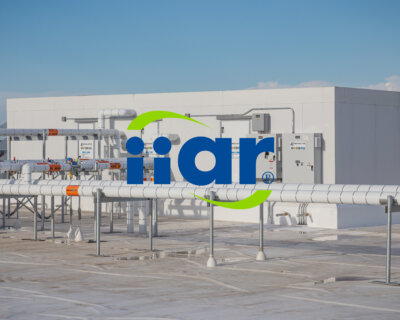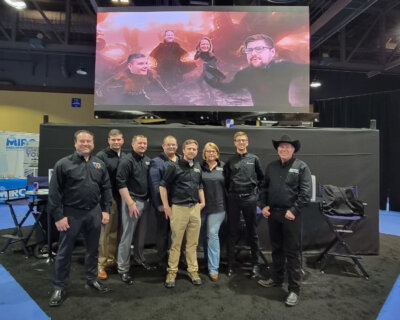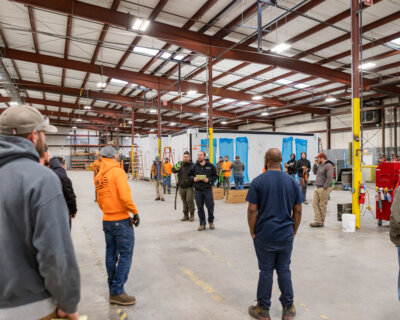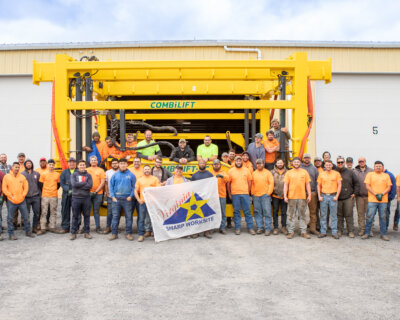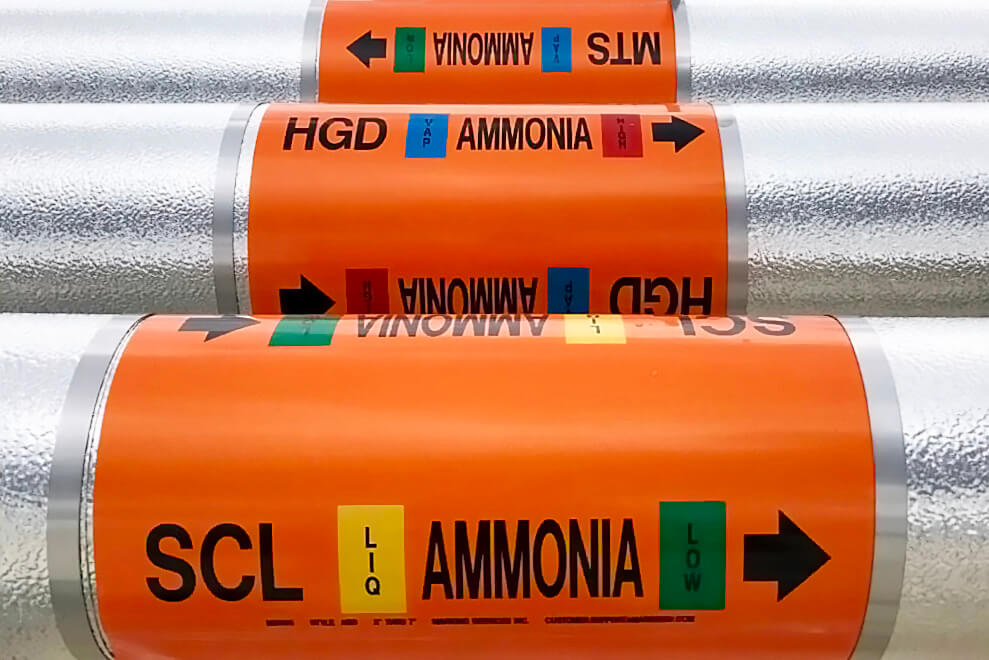
Ammonia Pipe Labeling Basics
Standardized ammonia pipe labeling helps make industrial refrigeration systems safer. Because the anhydrous ammonia used within those systems is a hazardous chemical, safety is paramount. Precautions should be taken to protect employees, surrounding communities, and the environment. Pipe labeling is one way that facilities can fulfill this duty.
The International Institute of Ammonia Refrigeration (IIAR) provides standardized pipe labeling guidelines in Bulletin No. 114, which was last updated in May 2018.
According to the guidelines, labels should be placed at several locations, including: before and after a change in direction; where piping terminates at equipment; before and after a wall or roof penetration; at least every 40 feet on straight runs of pipe; and at least once in each area that a pipe passes through.
The guidelines also specify how the label should look. A standard label is broken down into 5 sections:

1. Marker body
All marker bodies should have a safety orange background, with “AMMONIA” printed in black letters. The size of the marker body is dependent on several other factors; Table 1 of Bulletin No. 114 includes full specifications.
Labels may use various materials and attachment methods. The most important factors to consider when choosing are visibility and longevity. Labels should be visible from wherever normal operations take place in the facility. Additionally, marker bodies should resist fading and peeling if an adhesive is used to attach them to the piping.
2. Physical state
In refrigeration systems, ammonia is in either a liquid or vapor state, or a mixture of the two. The state is specified on the label: for liquid, the band is yellow and features “LIQ” in black; for vapor, the band is blue, and features “VAP” in black. Both bands are applied when the two states are mixed.
3. Pressure level
Pressure level is considered either high or low. For low pressure pipes (70 psi or lower), “LOW” should be printed on a green band with black letters. For high pressure pipes (70 psi or higher), “HIGH” should be printed on a red band.
4. Abbreviation
Abbreviated names identify specific ammonia pipes in a system. This allows operators and maintenance technicians to quickly identify a pipe and trace it through the system. For example, in the label shown above, LTRS stands for Low Temperature Recirculated Suction. A list of common abbreviations can be found at section 4.1.4 of Bulletin No. 114.
Abbreviations should be in black lettering, on the safety orange background.
5. Directional arrow
The final section of the label is a directional arrow, which indicates the direction of flow of ammonia. The arrow is black, and is on the safety orange background.
In addition to meeting regulatory requirements, standardized ammonia pipe labeling has practical benefits. It eases communication between operators and maintenance workers, which makes maintenance more efficient in the long run. It also ensures that workers can make safe, informed decisions around these systems.
More importantly, adequate labeling increases safety by helping prevent accidental discharges of ammonia. And in the case that an accident does occur, ammonia pipe labels can help emergency workers quickly and accurately assess the situation, lessening the potential for harm.
Because it increases safety and efficiency, and because it helps meet regulatory requirements, standardized pipe labeling is the right decision for any facility with an ammonia refrigeration system.


